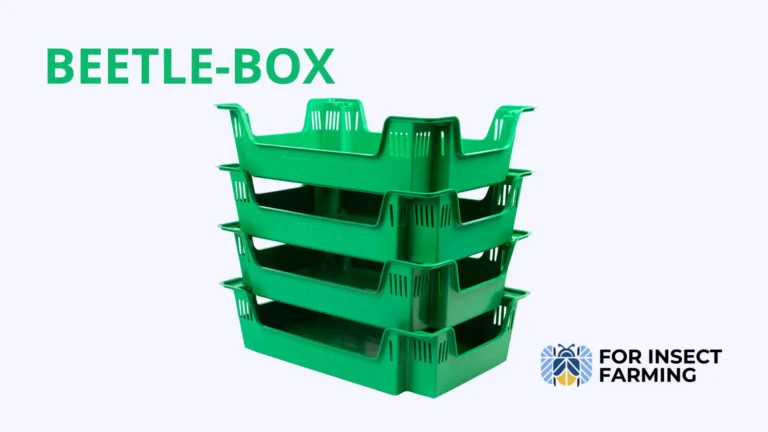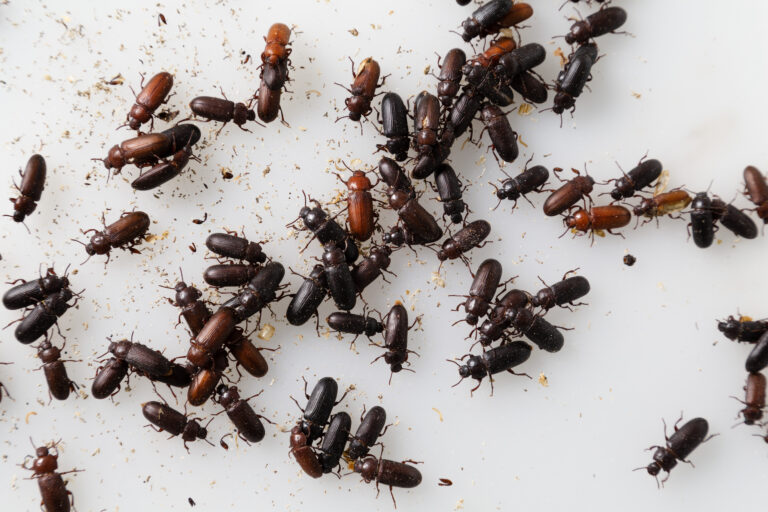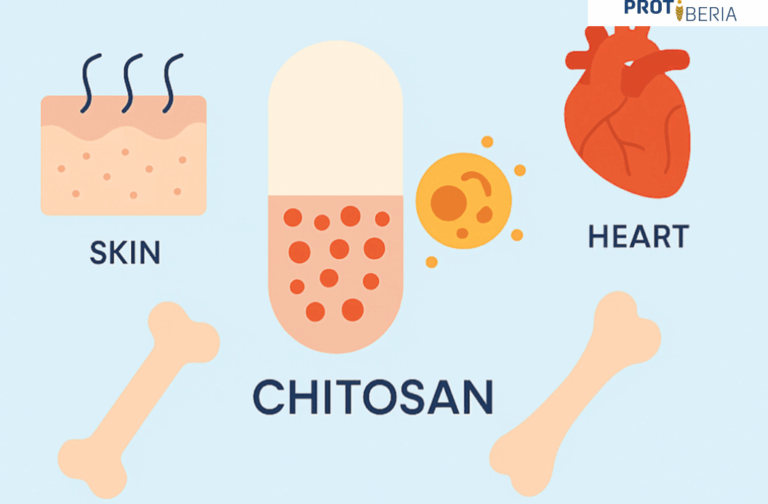| Selecting the proper rearing container is a fundamental part of process engineering in insect farming. The micro-environment created inside the box influences larval development, feed conversion efficiency and the overall sanitary stability of the production system. |
For this reason, Protiberia’s Beetle-Box has been engineered as a high-performance solution that enhances ventilation, improves feed distribution, increases stacking density and dramatically reduces storage space requirements when empty. Together, these characteristics support the scalability and reliability needed in industrial Tenebrio molitor production.
Technical Criteria in Rearing Tray Selection
The rearing box functions as the basic operational unit of a Tenebrio production line. Its geometry, materials and airflow behaviour affect temperature consistency, humidity control, oxygen availability and accessibility to feed. Ventilation is particularly critical; without an adequate air exchange rate, CO₂ can accumulate and humidity can rise, slowing larval growth and creating conditions favourable for fungal development or mite activity. A suitable box therefore must facilitate continuous airflow while preventing condensation zones and ensuring that moisture evaporates uniformly across the container.
Feed distribution is another decisive factor. In Tenebrio farming, any obstruction to the spread of substrate creates competition, uneven development and inefficient feed conversion. The internal design of the tray must allow the operator to distribute the substrate evenly and rapidly, minimizing dead zones and reducing manual handling time.
In addition to these biological considerations, the volumetric efficiency of the trays directly affects the economic performance of the farm. Systems designed for vertical production depend on the ability to stack trays at high density while maintaining structural stability, ergonomic handling and long-term durability.
Productive Impact of an Optimized Rearing Box
When a tray maintains a stable microclimate and ensures consistent access to feed, the productive gains are immediate and measurable. Larval mortality decreases as humidity and CO₂ levels remain within optimal ranges. Growth rates accelerate because larvae experience fewer interruptions in feeding behaviour. Batch uniformity improves, enabling more predictable harvest cycles, and the feed conversion ratio becomes more efficient thanks to the reduction of competition and stress. A well-designed tray also promotes better sanitary conditions, reducing the incidence of pathogens and the operating costs associated with them.
Beetle-Box: Engineering Applied to Intensive Production
Beetle-Box embodies these principles through a design that responds directly to the needs of large-scale Tenebrio molitor production.
Its advanced ventilation system is based on strategically placed slots that promote a stable, laminar airflow throughout the container. This airflow pattern helps disperse CO₂, prevents localised humidity accumulation and supports consistent evaporative dynamics. The result is an internal environment that favours faster larval development while lowering the risk of fungal or mite proliferation.
The interior geometry of the Beetle-Box has been conceived to simplify feeding operations. Substrate can be distributed quickly and uniformly, allowing all larvae to access food simultaneously. This uniformity not only enhances growth rates but also improves batch predictability and reduces variability, which is essential for industrial-scale planning.
With external dimensions of 600 × 400 × 150 mm and a stacking clearance of only 30 mm, Beetle-Box maximizes the use of vertical space, allowing more units per rack and reducing the overall footprint of the rearing area. Beyond production, its space efficiency extends to logistics: when the trays are empty, they can be nested inside one another, reducing storage volume by up to sixfold compared with standard stacked trays. This nesting capability significantly lowers warehouse requirements and transport costs.
To facilitate smooth and error-free workflow, the Beetle-Box also incorporates orientation marks that allow operators to immediately identify the correct stacking direction. This small but essential detail improves structural stability and speeds up routine handling.
Constructed from high-resistance polypropylene, the Beetle-Box maintains rigidity under load, withstands intensive industrial use and offers low-porosity surfaces that simplify cleaning and sanitation.
Conclusion
In high-volume Tenebrio molitor farming, the rearing container must be considered a technological component rather than a simple accessory. Ventilation performance, feed accessibility, stacking efficiency and spatial management all play decisive roles in productivity.
Beetle-Box integrates these demands into a single, robust system that improves growth conditions, simplifies operations and increases production density while reducing storage and handling costs.
Its optimized airflow, efficient interior design, industrial-grade construction, nesting capability and stacking guidance features make Beetle-Box one of the most advanced solutions available for professional insect-rearing facilities.



